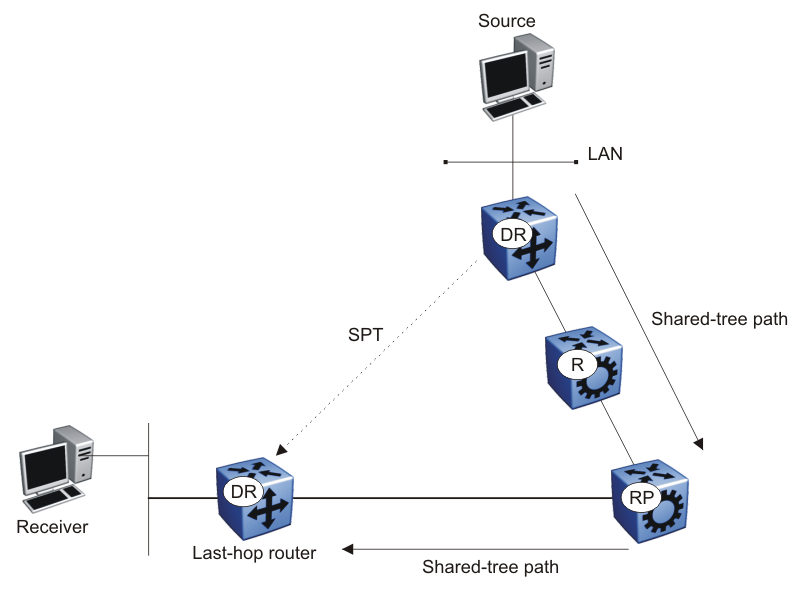Shared trees and shortest-path trees
A PIM-SM domain uses shared trees and shortest-path trees to deliver data packets to group members. This section describes both trees.
Shared trees
Group members in a PIM-SM domain receive the first packet of data from sources across a shared tree. A shared tree consists of a set of paths that connect all members of a multicast group to the RP. PIM creates a shared tree when sources and receivers send messages toward the RP.
Shortest-path trees
After receiving a certain number of packets from the RP, the DR changes from a shared tree to an SPT. Switching to an SPT creates a direct route between the receiver and the source. The switch changes to the SPT after it receives the first packet from the RP.
Shared tree and shortest-path tree shows a shared tree and an SPT.
Shared tree
and shortest-path tree


